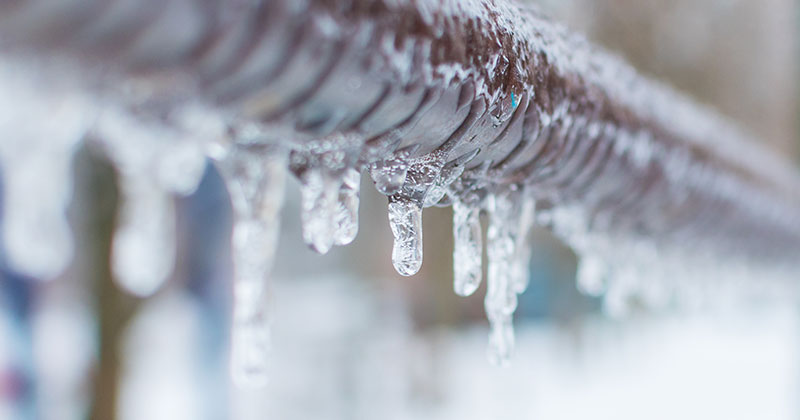
During winter months, there are many threats to your business’s physical structure that could leave you out in the cold when it comes to repair costs. More importantly, if the damage to your building is significant, you may be forced to close until repairs are made – meaning you’ll miss out on serving your customers and generating revenue.
Let’s talk about one of the biggest threats to your jewelry business during winter months — your pipes. Not only can they freeze, but they can also burst, causing costly water damage to your property and your inventory.
An easy way to mitigate this risk is to install sensors that monitor your property 24/7 alerting you by text or email of any water intrusion or extreme temperature changes. If you are a Jewelers Mutual Group policyholder, these sensors are available to you at no additional cost.
Watch this short video to learn more about the benefits of having a sensor in your business.
Because of this risk, it’s important to insulate any exposed pipes with an insulating sleeve or wrap to help prevent cold air from affecting pipes directly, regardless if they are hot or cold lines. Proper insulation throughout your building can also save a considerable amount on your utility bill.
Here are some tips on preventing and thawing frozen pipes.
How to Prevent Frozen Pipes
-
Keep outside access doors closed if there are supply or sprinkler lines in these areas to help keep heat indoors.
-
Disconnect exterior hoses and drain exterior faucets (where possible).
-
Open cabinet doors (where water fixtures are located) to allow the warmer air to circulate in these spaces.
-
Turn on the cold-water drip from the faucets (a steady stream the width of a pencil) to help combat water freezing within the supply lines. Freezing water within supply lines expands as ice is formed and is a precursor to broken/ruptured pipes.
-
Keep the thermostat set to a consistent temperature during the day and night. You may incur higher heating bills, but this can prevent a more costly and inconvenient water loss and a cease in operations.
-
Set a thermostat to a temperature of at least 55 degrees Fahrenheit (13 Celsius).
-
Turn off the water from the supply line that allows water to come into your building (where applicable). Continue to open/turn on faucets allowing them to run until the pipes are empty.
How to Thaw Frozen Pipes
If you discover your pipes are frozen, here’s what you can do to thaw them to prevent them from bursting.
-
If you turn on your faucets and no water, or only a trickle of water is dispensed, suspect a possible frozen pipe.
-
Pipes often freeze when against exterior walls or where water enters your premises through a foundation or exterior location (outdoor faucets for example).
-
Keep the faucet open and in the “on” position. As water within the pipes begins to melt, water will begin to flow through the frozen area. Running water helps to speed up the melting of ice within the pipes.
-
If possible, apply heat to a section of suspected frozen pipe with a hairdryer, portable space heater or even wrap pipes with towels that have been immersed in hot water to allow a gradual thaw. Do not use torches, gas-powered heaters, fuel-powered heat sources or open flames.
-
Apply gradual heat until full water pressure is restored.
Finally, if you are unable to locate the frozen area or it’s not accessible and cannot thaw, call a licensed plumber to properly control or prevent a possible loss. Looking to take these tips with you? Print out these guidelines.
For more guidance on measures you can take to keep your business safe and secure, including more information about easy-to-install sensors, contact our Loss Prevention team at [email protected].
For more resources and services available to keep your jewelry business secure, visit JM™ Risk Services. JM Risk Services is a division of Jewelers Mutual Group dedicated to providing loss prevention education and solutions to the entire jewelry industry.
The information featured is intended to provide general education about the subject matter covered.
